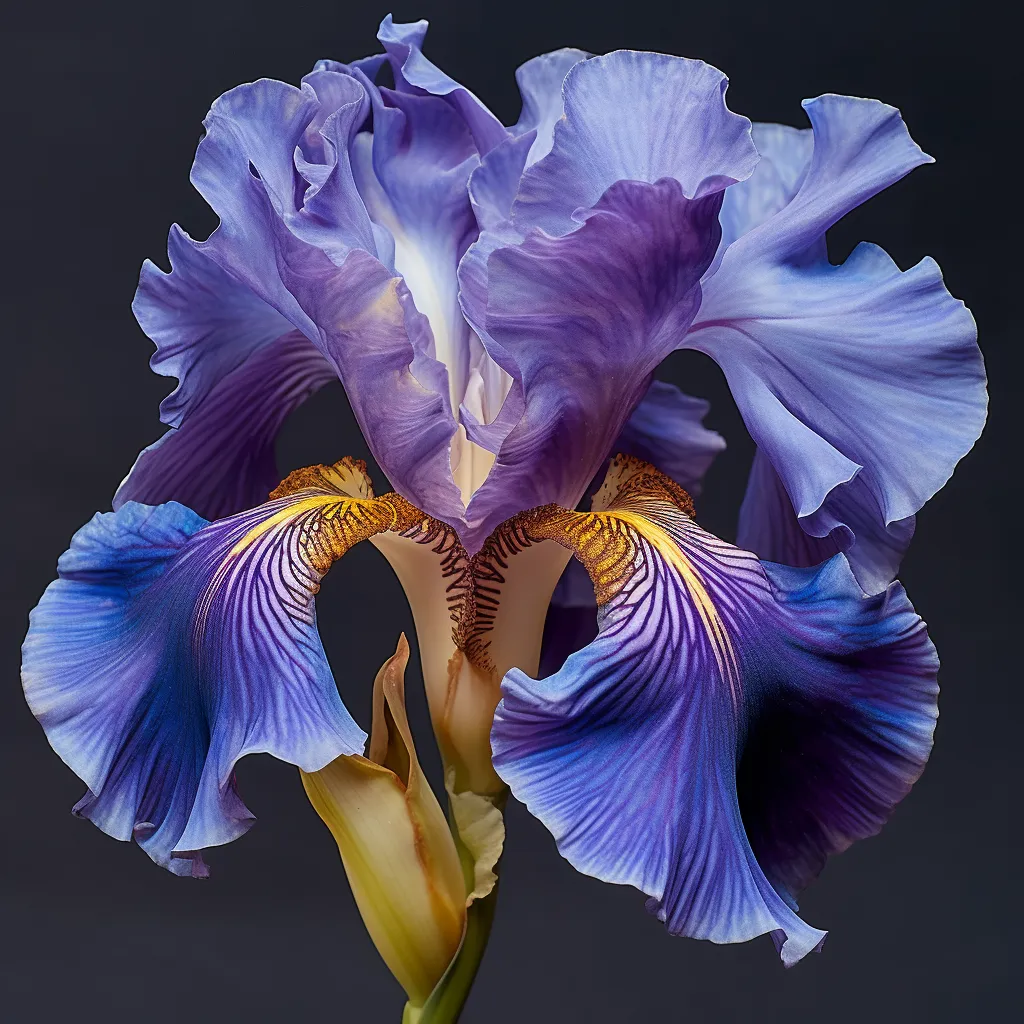Story of Day :
Contents
Iris lazica (Lazistan Iris) Plant Care Tips
Gardening can be a rewarding and therapeutic hobby, and one plant that every garden enthusiast should consider growing is the Iris lazica, also known as the Lazistan Iris.
This stunning perennial flower is native to the Caucasus region of Eurasia and offers a variety of colors, shapes, and sizes to enhance any garden.
In this article, we will explore some essential care tips for growing Iris lazica plants.
Choosing the Right Location
Before planting your Lazistan Irises, it’s important to select an appropriate location in your garden.
These plants prefer full sun but can tolerate partial shade.
Ensure that they have access to at least six hours of direct sunlight daily.
Your chosen spot should also have well-draining soil.
If you have heavy clay or compacted soil, incorporate organic matter such as compost or peat moss to improve drainage.

Planting Tips
Iris lazica requires proper planting techniques for successful growth.
Follow these steps when planting your Lazistan Irises:
- Dig a hole that is twice as wide and deep as the rhizome (the thickened stem of the plant).
- Space multiple rhizomes at least 12 inches apart to allow for adequate air circulation.
- Place the rhizome in the hole with its top exposed just above ground level.
- Cover with soil gently but firmly without compacting it around the rhizome.
- Water thoroughly after planting to settle the soil around roots.
Maintaining Optimal Conditions
To ensure healthy growth and beautiful blooms from your Iris lazica plants, it’s important to provide optimal conditions:

Watering
Iris lazica prefers moderate moisture levels.
Water your plants deeply and thoroughly during dry spells, but avoid overwatering as it can lead to root rot.
Aim for about 1 inch of water per week.
Fertilizing
Apply a balanced slow-release fertilizer in early spring when new growth starts.
Avoid using high-nitrogen fertilizers, as they can promote lush foliage at the expense of flowering.
Mulching
A layer of organic mulch around your Lazistan Irises can help retain soil moisture, regulate temperature fluctuations, suppress weed growth, and add nutrients to the soil.
Apply a 2-4 inch layer of mulch around the plants but keep it away from direct contact with the rhizomes.
Pest and Disease Control

Iris lazica is generally resistant to pests and diseases; however, there are a few common issues you should be aware of:
- Soft Rot: This fungal disease affects rhizomes in poorly drained soil.
To prevent soft rot, ensure proper drainage and avoid overwatering.
- Iris Borer: The larvae of iris borers can bore into rhizomes and cause significant damage.
Inspect your plants regularly for signs such as yellowing leaves or holes in rhizomes.
If you notice any infestation signs, remove affected parts immediately.
Dormancy Period
In late summer or early fall after blooming has finished for the season, Iris lazica enters its dormancy period where its foliage dies back naturally.
During this time:

- Reduce watering gradually as the plant prepares for dormancy.
- Remove any dead foliage to prevent disease and pest issues.
- If desired, divide overcrowded rhizomes every three to four years during the dormant period.
This can help rejuvenate the plants and improve flowering.
Summary
Growing Iris lazica (Lazistan Iris) can be a delightful addition to any garden.
By selecting a suitable location with adequate sunlight and well-draining soil, following proper planting techniques, providing optimal conditions for growth, and taking necessary precautions against pests and diseases, you can enjoy the beauty of these stunning flowers year after year.
Now that you have learned some essential care tips for Iris lazica plants, get ready to witness their vibrant colors brightening up your garden!